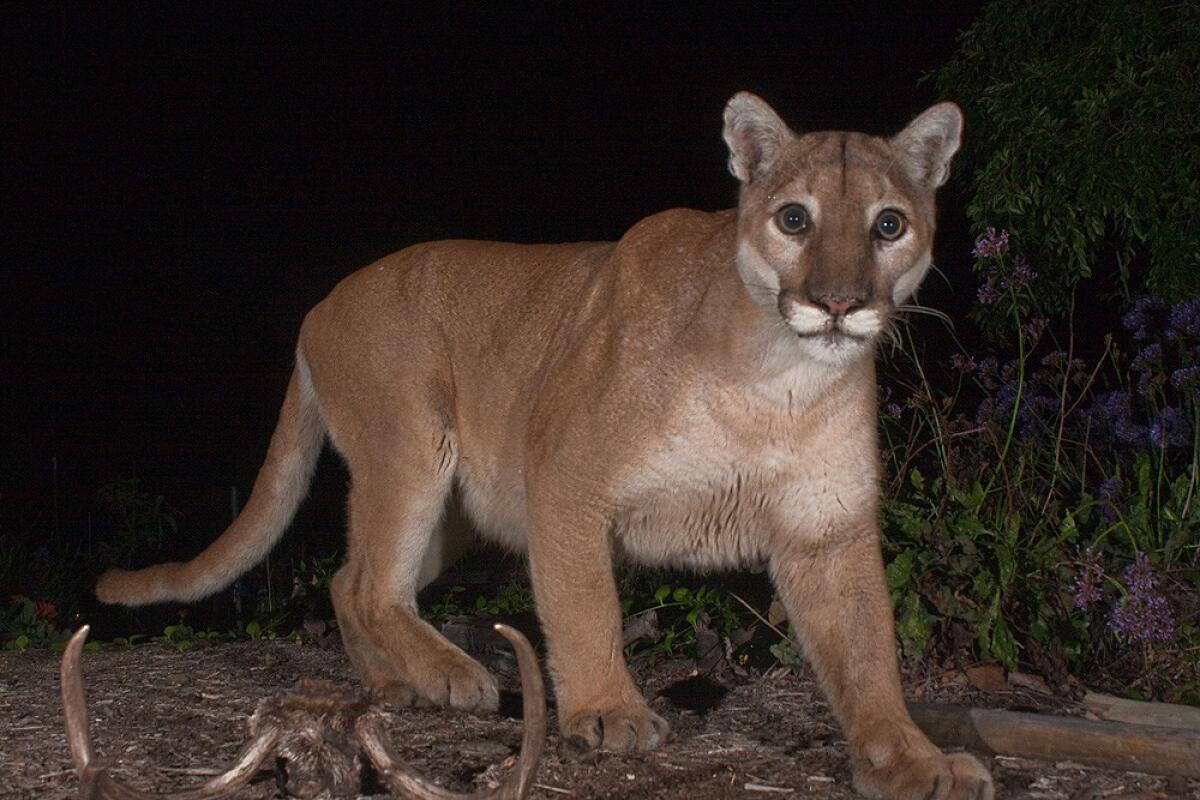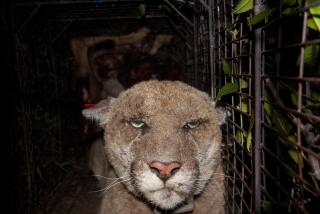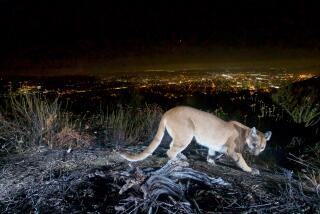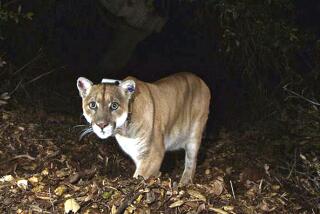Rat poison found in remains of mountain lion P-41, but cause of death still unknown

Lab tests were unable to determine a cause of death for P-41, a mountain lion whose movements in the Verdugo Mountains were captured in beautiful photographs by citizen scientists, National Park Service officials said.
But the lab results from the state Animal Health and Food Safety Laboratory did show the cougar suffered from a common issue among big cats in California’s wildlife-urban interface: poisoning.
“The lab found both first- and second-generation anticoagulants in his liver,” Seth Riley, a wildlife ecologist for the Santa Monica Mountains, said in a statement. “We continue to see indications that these poisons are working their way up the food chain through what we believe is unintentional poisoning.”
Residents found the male puma in October near Shadow Hills, officials said. The cat had been dead for several days and was noticeably thin. The body was too decomposed to pinpoint a cause of death, according to the park service said.
But several anticoagulant rodenticide compounds were found in his liver, officials said. They’re commonly present in dead mountain lions found throughout the state (14 of 15 mountain lions tested positive for them since 2002.)
Park service officials don’t know how P-41 ingested the poison but said common ways are through eating animals that have ingested the poisons, such as a squirrel, or by eating an animal that ate an animal that was poisoned — such as a coyote.
P-41’s remains were found a few weeks after the La Tuna fire burned across his home range.
Park officials believe that P-41 fathered two litters but that none of his four offspring reached adulthood in the wild. Two were hit and killed on freeways; the remaining two were captured and now live in a wildlife refuge in Riverside.
National Park Service biologists had been tracking P-41 since May 2015, hoping to learn about his movements, especially whether he would remain in the Verdugos or also use the southern San Gabriel Mountains as part of his territory, which would involve crossing the 210 Freeway.
The agency said in October that GPS data collected during the two years P-41 was tracked showed he did not cross the 210 or use the San Gabriels, but that his territory extended across the 2 Freeway into the San Rafael Hills.
His movements after the La Tuna fire were not known because his tracking collar failed this summer.
For breaking California news, follow @JosephSerna on Twitter.
More to Read
Sign up for Essential California
The most important California stories and recommendations in your inbox every morning.
You may occasionally receive promotional content from the Los Angeles Times.











